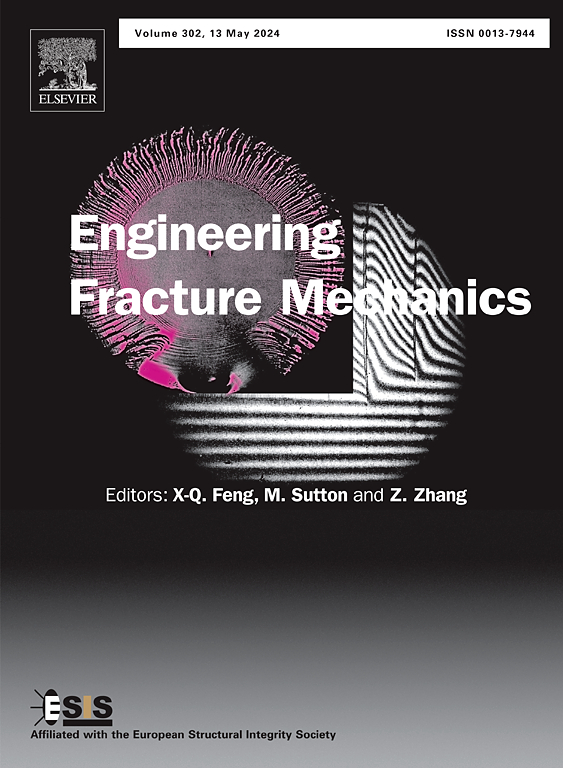A nanoscale assembled plate with surface elasticity containing an interface crack subject to bending moments and shear forces
IF 4.7
2区 工程技术
Q1 MECHANICS
引用次数: 0
Abstract
This article studies a nanoscale plate assembled by two nanoplates with surface elasticity containing an interface crack when the crack surfaces are loaded by bending moment and shear force. The classical (Kirchhoff) plate theory incorporating Gurtin–Murdoch (GM) surface elasticity is utilized. A bimaterial nanoplate with an interface through-thickness crack is converted to a mixed boundary-value problem, and is solved by using the Fourier integral transform. A singular integral equation with two Cauchy kernels for either uniform bending moment or constant effective shear force is derived. The closed-form solution is given and the exact expressions for the bending moment and shear force are determined. Specially, the oscillatory singular behavior of the crack-tip field is found. When two dissimilar nanoplates are identical, the oscillatory singularity disappears but singularity dominated by and ( being the distance from the crack tip) remains. Additionally, when the surface elasticity is neglected, the results of a large-scale assembled plate with a through-thickness interface crack are directly derived from the present. The obtained results show that surface elasticity has a significant effect on the energy release rate of the oscillatory crack-tip field.
求助全文
约1分钟内获得全文
求助全文
来源期刊
CiteScore
8.70
自引率
13.00%
发文量
606
审稿时长
74 days
期刊介绍:
EFM covers a broad range of topics in fracture mechanics to be of interest and use to both researchers and practitioners. Contributions are welcome which address the fracture behavior of conventional engineering material systems as well as newly emerging material systems. Contributions on developments in the areas of mechanics and materials science strongly related to fracture mechanics are also welcome. Papers on fatigue are welcome if they treat the fatigue process using the methods of fracture mechanics.

 求助内容:
求助内容: 应助结果提醒方式:
应助结果提醒方式:


